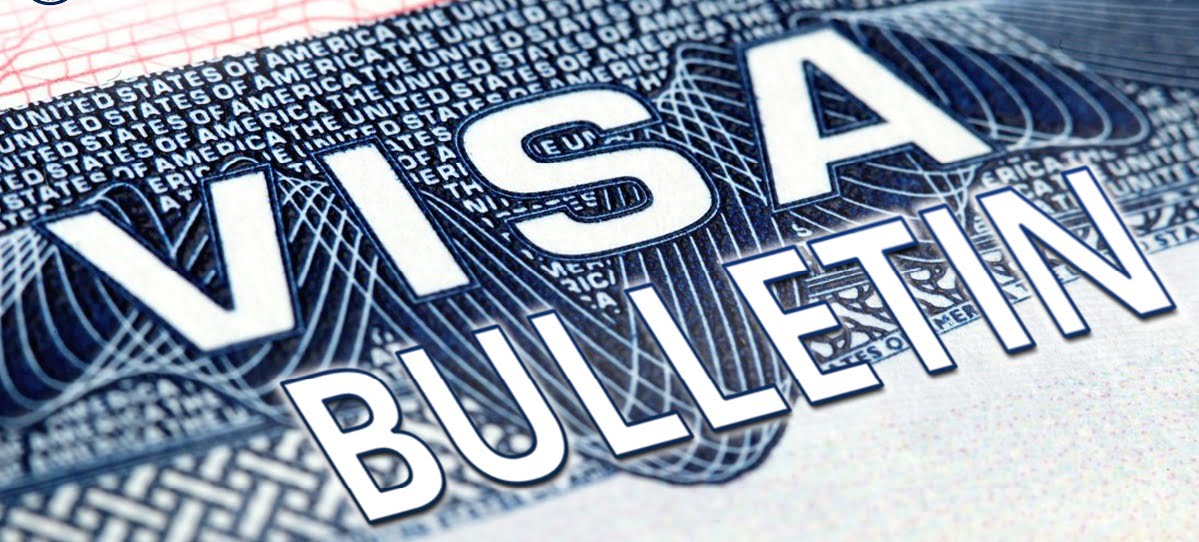Labor Certification (PERM) Application procedure is intended to assure that you are not seeking to employ a foreign national when qualified U.S. workers are available to fill the position and that you have not offered wages or working conditions to the foreign national that adversely affect the wages or working conditions of U.S. workers. If the labor certification procedure locates any U.S. workers who meet your minimum requirements (education, experience, and training) for the position, you will not be permitted to obtain permanent residence for the applicant.
The U.S. Department of Labor (DOL) requires that you be willing to hire a U.S. worker if one is qualified and available, although it will not force you to hire such a worker if one is located. This requirement is intended to assure that a fair test of the labor market is conducted. Therefore, the employer may not discourage U.S. workers who apply for the job or tell them that the job is already filled by the foreign national or that recruitment has been undertaken strictly for labor certification purposes.
Nor may the foreign nationals participate in interviewing or evaluating U.S. job applicants; because that participation gives the appearance that a fair test of the labor market is not contemplated.
One requirement of the DOL is particularly worth explanation: that any U.S. worker who applies for the job and who meets the actual minimum requirements for the job be considered qualified, resulting in denial of the labor certification. This requirement is the principal distinction between the labor certification procedure and the normal hiring practices of most employers, who seek the most qualified candidate for the job, not just one who meets the job’s minimum requirements. Although the recruitment campaign required of employers by the DOL prior to the filing of the application is filed has many similarities to the “real world” recruitment procedures used by employers, it is the distinction just mentioned that makes the two processes very different, and explains why aspects of the application procedure seem peculiar to many employers.
Minimum Requirements
Most employers already have established “minimum” requirements for the job. These requirements for most employers are established in vague or broad terms and are set at a basic level, in order to attract the maximum number of job candidates, giving the employer great flexibility in choosing the most qualified person among those candidates. The requirements are set knowing that the person actually hired will have some combination of qualifications beyond the employer’s stated requirements, making that person the most qualified out of the applicants. It is virtually a certainty that a person who just meets the stated requirements will not be hired.
The employer, however, does not need to define more carefully the actual minimum requirements below which a candidate would not be hired, because the hiring process will turn up the most qualified candidate: it makes no difference to the employer how many of the other candidates could actually have been hired. Another reason for not defining the actual minimum requirements is that there are many alternative combinations of qualifications that the employer is willing to consider in filling the job, and by not defining those alternatives in detail, the employer does not limit the applicant pool and has more flexibility in choosing the best candidate.
On the other hand, the DOL requires that any U.S. job applicant who meets the minimum requirements for the job be considered qualified, and it is this standard which governs whether the labor certification application can be approved. Therefore, for purposes of this application it is very important to define the threshold point, above which the employer is actually willing to hire any job applicant— that is, the employer’s actual minimum requirements for the job. As you can see, what the DOL means by minimum requirements is quite different than the requirements set by employers in their own normal hiring procedures. The employer must carefully define the job duties, and think through all of the alternative combinations of experience, education, training, and special skills with which job applicants can perform those job duties.
These are the “minimum requirements” that must be included by the employer in the labor certification application and which must form the basis for the prevailing wage determination obtained from the state labor department and the recruitment campaign that will be conducted before the application is filed.
How We Can Help You?

Our attorneys will work with you to explore the nature of the job being filled by an applicant and the actual minimum requirements that you would accept in hiring a worker for that job. Our attorneys have explained the DOL requirement in detail because we would like you to understand why the job description and minimum requirements we develop for the labor certification application are likely to be more detailed than the description and job requirements you may use in your normal hiring practices. That difference is based on the different purposes and goals of the two procedures.
The information you provide will be crucial in successfully preparing the application, and we will need to spend sufficient time with you to develop that information. Once the job description and minimum requirements are developed, you will need to be involved in the following steps:
- Obtain a prevailing wage determination (PWD) from the state labor department. A PWD is required because you must offer at least the prevailing wage to ensure that the application does not adversely affect the wages of S. workers. It is at this early stage that any issues with regard to the PWD must be raised by the employer. To obtain a PWD, we will help you complete the state office’s prevailing wage request form. As noted, the key elements in the form are the job description and requirements. The state labor department will normally rely on the DOL’s Occupational Employment Statistics (OES) database to issue a PWD, with the state office assigning a wage based on the occupation and skill level of the position. Absent a collective bargaining agreement, you may submit an alternative wage survey with their prevailing wage request or to challenge a PWD issued by the state office utilizing OES data. The alternative wage data will have to be endorsed by the state office prior to filing the application. The DOL rules outline standards for alternative surveys which we will discuss with you in the event that use of such a survey is considered. A PWD is valid for a period of 90 days to one year after issuance. Depending on the state office. You must file your application or commence recruitment within the validity period specified on the form.
- Once the PWD is obtained and any outstanding issues are resolved, you must take recruitment steps to locate available and qualified S. workers prior to the filing of the application. PERM requires that two print advertisements be run for all labor certifications. The general rule requires one ad on two different Sundays in the newspaper of general circulation in the area of intended employment. However, for professional positions requiring experience and an advanced degree, the second Sunday newspaper ad may be substituted with an ad in a professional journal appropriate for the job offered.
Both ads must be placed more than 30 days, but no more than 180 days, before filing. In addition, applications for professional positions must include documentation of at least three additional recruitment steps, out of a list of 10 possibilities. The three additional steps must be different. The additional recruitment steps only require employers to recruit for the occupation involved in the application, rather than for the specific job opportunity involved in the application. The printed ads need to include the name of the employer, but do not need to include the salary offered. An advertisement may be used for multiple positions, and can be broadly written with few details regarding job duties and requirements, so long as all of the required elements are included. We will discuss these elements with you and help you draft the ads and preplan other recruitment steps if appropriate.
- You must also give notice of the planned filing of the labor certification to the bargaining representative in the area of intended employment if there is such a representative. If there is no bargaining representative, you will be required to post a notice about the job opportunity for 10 consecutive business days in a conspicuous place at the location of employment. The notice will need to be posted between 30 and 180 days prior to filing the application. Moreover, you must publish the notice in any and all in-house media normally used to fill positions in the organization, in accordance with normal procedures used for recruitment for similar positions in the organization. Apart from the job posting, the employer must place a job order with the state employment office serving the area of intended employment. The order must be placed for a period of 30 days. This recruitment step must occur at least 30 days but not more than 180 days before the filing of the application.
- You must review all responses to the printed ads (and other recruitment steps, if applicable). We will help you to evaluate the resumes to determine those applicants who are not qualified and those who could be qualified based on the information provided. The ones who could be qualified will need to be contacted by you for the purposes of clarifying whether they actually have the minimum qualifications for the job or to schedule an in-person interview with them. It is likely that at least some job applicants will need to be interviewed, and the interviews should be conducted by you at your offices.
- Once the interviews are complete, We will help you in the evaluation of the recruitment results. U.S. job applicants can be rejected only for reasons that the DOL considers “ lawful” and “job-related.” We will explain what those terms mean and assist you in the preparation of a recruitment report explaining why each job applicant was rejected.
This report, however, must come from you. The report is not submitted with the application but must be presented to the DOL if requested in the course of a post-filing audit.
- Once the last recruitment step is taken we will help you prepare and file the application, ETA Form 9089. Remember that the application can be filed no sooner than 30 days before the last recruitment step was taken and no later than 180 days after the first recruitment step. Lobar certification application may be filed online at a dedicated DOL website or may be sent by mail to one of two national processing centers. As a general matter, applications should be submitted electronically for several reasons. First, a faster decision can be expected with regard to electronically-filed applications. In addition, fewer mistakes are possible because the electronic form includes detailed instructions, prompts, and checks. Finally, you will be in a better position to monitor the progress of electronically-filed forms. You must register with DOL online before you may submit applications on-line. While we can help you register, We cannot complete the registration process for you. The online registration will require you to provide the DOL with basic information about your company, including name, address, taxpayer ID number, and the name and contact information of the company employee who is registering the company. Once the DOL receives the online registration, it will verify the existence of your company and the hiring authority of the employee who registered the company. The DOL will then approve the registration and send you a username, password, and PIN, which will permit you to begin filing cases. Once you are registered, you may then grant me access to your account for the purpose of preparing and filing cases on the employer’s behalf.
- While preparing the application, we will also help you create a DOL audit file in the event your application is flagged by the DOL for investigation. The audit file will consist of documentation to support the key elements of the application. The file may contain the following: (1) business necessity documentation to support job requirements not considered normal for the application; (2) the prevailing wage determination issued by the state labor department; (3) documentation of the recruitment steps and a report of the results of your recruitment campaign; (4) evidence of job order placement and job posting; (5) documentation to establish any qualifying experience gained by the foreign national with the employer was gained in a substantially different position; (6) documentation concerning any ownership interest of the foreign national or familial relationship between the foreign national and company owners or officers; (7) a copy of the certified Form ETA 9089. Other documentation may also be required depending on the circumstances.
- After an application is filed, DOL personnel will conduct an initial review of the application to determine that it is acceptable for processing. A computer system will then review the application based upon various selection criteria that will allow “problematic” applications to be identified for audit. In addition, as a quality control measure, some applications will be randomly selected for audit. In some instances, the DOL confirms specific information provided on the application.
- If an application has not been selected for audit and satisfies all other reviews, the application will be certified and returned to you. The employer must immediately sign the application (if submitted electronically). The certified application may then be submitted to the USCIS in support of an employment-based petition. The DOL anticipates electronically-filed applications not selected for audit to be adjudicated within 40 to 60 days from the date the application was initially filed.
- Your case may be fluffed for audit on the basis of certain factors or simply randomly selected. If the application is selected for audit, you will be notified and required to submit, within 30 days, documentation to verify the information stated in or attested to on the application. If the DOL determines that the documentation is complete and consistent with responses on the ETA 9089. It will certify the application. If the documentation is deemed deficient by the DOL, the certification may be denied. Alternatively, the certifying officer may request additional documentation or order supervised recruitment. The supervised recruitment requires the placement of an ad in a newspaper for three days (including a Sunday) in conjunction with a 30-day job order. At the completion of supervised recruitment, you will have 30 days to document in a recruitment report the outcome of the effort, and the lawful job-related reasons for not hiring S. worker applicants. Upon receipt of the report, the certifying officer will either certify or deny the application. A final determination will be issued without an opportunity to rebut the findings directly with the DOL but the employer may file a request for reconsideration within 30 days from the date of issuance of the denial.
Although we will do everything possible to make the process as painless as possible for you and to assure that it causes minimum disruption to your business – your active involvement, interest, and cooperation throughout the process is necessary for the successful conclusion of the case.









